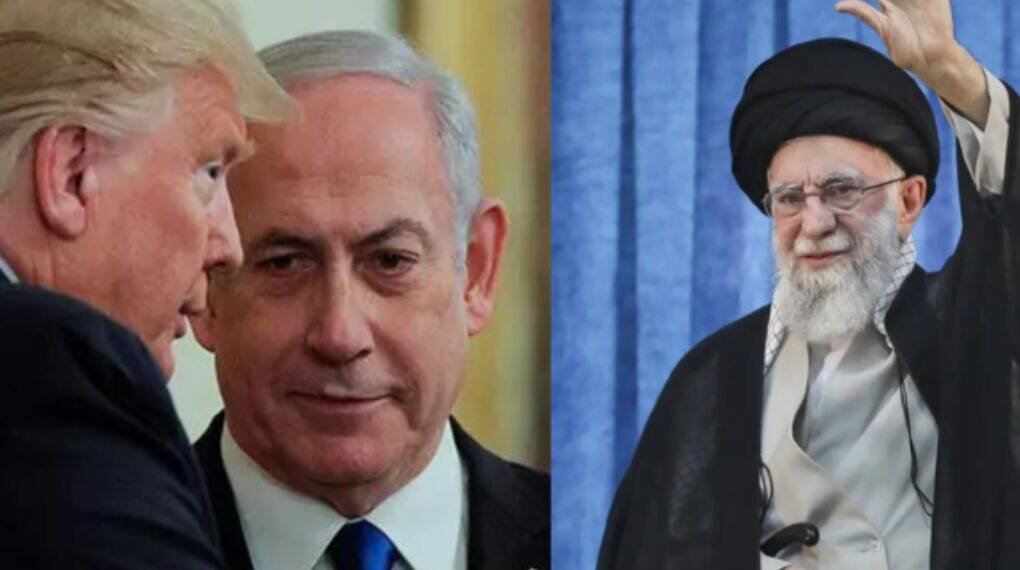In a dramatic revelation, U.S. President Donald Trump reportedly disapproved plan by Israeli Prime Minister Benjamin Netanyahu to assassinate Iran’s Supreme Leader, Ayatollah Ali Khamenei. The request came in the wake of Israel’s latest offensive—Operation Rising Lion—which targeted Iranian nuclear and military facilities in an unprecedented escalation. According to CBS News, quoting three senior U.S. officials, Trump flatly refused the plan. “Not a good idea,” he reportedly told Netanyahu. The former president has yet to comment publicly on the report.
The Israeli strikes mark a significant departure from the traditional Begin Doctrine, named after former Prime Minister Menachem Begin, which justified preemptive military action against regional adversaries developing weapons of mass destruction. Previously invoked during airstrikes on Iraq in 1981 and Syria in 2007, the doctrine aimed to halt nuclear proliferation. Netanyahu’s current approach appears broader, more aggressive, and deeply ideological—targeting not just infrastructure but the very leadership of Iran.
Speaking to ABC News, Netanyahu defended the proposed assassination plan, arguing that eliminating Khamenei would bring an end to the escalating conflict with Iran. He insisted that targeting Iran’s top leader would end, not escalate, the ongoing fight between the two nations. In parallel, Netanyahu has launched an overt campaign to stir unrest inside Iran, calling on its citizens to rise against what he describes as the “evil and oppressive Islamic regime.”
In at least four recent video messages addressed directly to the Iranian people, Netanyahu declared that the collapse of Iran’s regional allies—Hamas in Gaza, Hezbollah in Lebanon, and the Assad regime in Syria—signals a “chain reaction” that will soon reach Tehran. “Just as we want peace with you, you want peace with us,” Netanyahu said. “One day, Iran will be free.”
In response to Israeli threats and airstrikes, reports suggest that Khamenei and his family have been moved to a secure underground location. The Islamic Revolutionary Guard Corps has taken over protection duties, and Khamenei is personally overseeing military developments and issuing strategic orders. This escalation marks one of the tensest moments in Iran since the Islamic Revolution of 1979, which overthrew the Western-backed Shah Mohammad Reza Pahlavi and ushered in a clerical regime led by Ayatollah Ruhollah Khomeini. After Khomeini’s death in 1989, his close aide and loyalist, Ayatollah Ali Khamenei, assumed the role of Supreme Leader—a position he has held for more than three decades.
Despite the pressure from Israel, regime change in Iran is no simple task. Three major opposition forces have emerged over the decades, but none has succeeded in mobilizing sufficient support to challenge the ruling clerics.
The People’s Mujahideen of Iran (MEK), once an influential revolutionary force, lost domestic credibility after aligning with Saddam Hussein during the Iran-Iraq War. It now operates in exile, primarily from Albania, and remains politically toxic within Iran.
The Green Movement, which erupted in 2009 after a disputed presidential election, briefly energized Iran’s youth and civil society with calls for reform but stopped short of advocating regime overthrow. Its leaders remain under house arrest, and the movement is largely dormant.
Monarchists, led by exiled Crown Prince Reza Pahlavi, advocate for a secular constitutional monarchy. Most Iranians reject the current regime, Pahlavi has no proven support base inside the country and remains a controversial figure. Even he has warned that foreign threats or military interventions could backfire and unite Iranians behind the regime.
Analysts argue that even if Israel were to score military victories, it could not alone dismantle the deeply rooted clerical state in Iran. Doing so would require full-scale intervention on the scale of the Iraq War.
Dr Zakir Hussein, expert in Middle East Affairs, “Such an operation would necessitate around 200,000 U.S. troops on the ground for at least five years. This kind of prolonged engagement would draw the United States into another Middle East quagmire, draining its resources and strategic focus just as global power dynamics are shifting”.
These next ten years are critical for the United States, which finds its global influence challenged by emerging powers. China, in particular, has grown from a marginal force to a dominant economic and military rival. Its assertive response to U.S. tariffs during the Trump administration and its rapid advancements in military technology—such as fifth- and sixth-generation fighter jets and powerful radar systems—signal its rise as a peer competitor. Alongside China, nations like India, Iran, Turkey, Saudi Arabia, and South Africa are asserting greater independence on the world stage, contributing to the erosion of the unipolar order that the U.S. has led since the Cold War.
In this context, Netanyahu’s strategy—combining military strikes, psychological pressure, and calls for civil rebellion—represents a high-stakes gamble. But with no clear successor to Khamenei, no unified domestic uprising in sight, and no guaranteed support from Washington, the plan remains a risky and uncertain path. For now, regime change in Iran is more a political aspiration than a strategic reality. And unless the geopolitical calculus changes dramatically, Israel may find that even bold military action cannot unseat a regime that has survived four decades of internal and external pressure.








